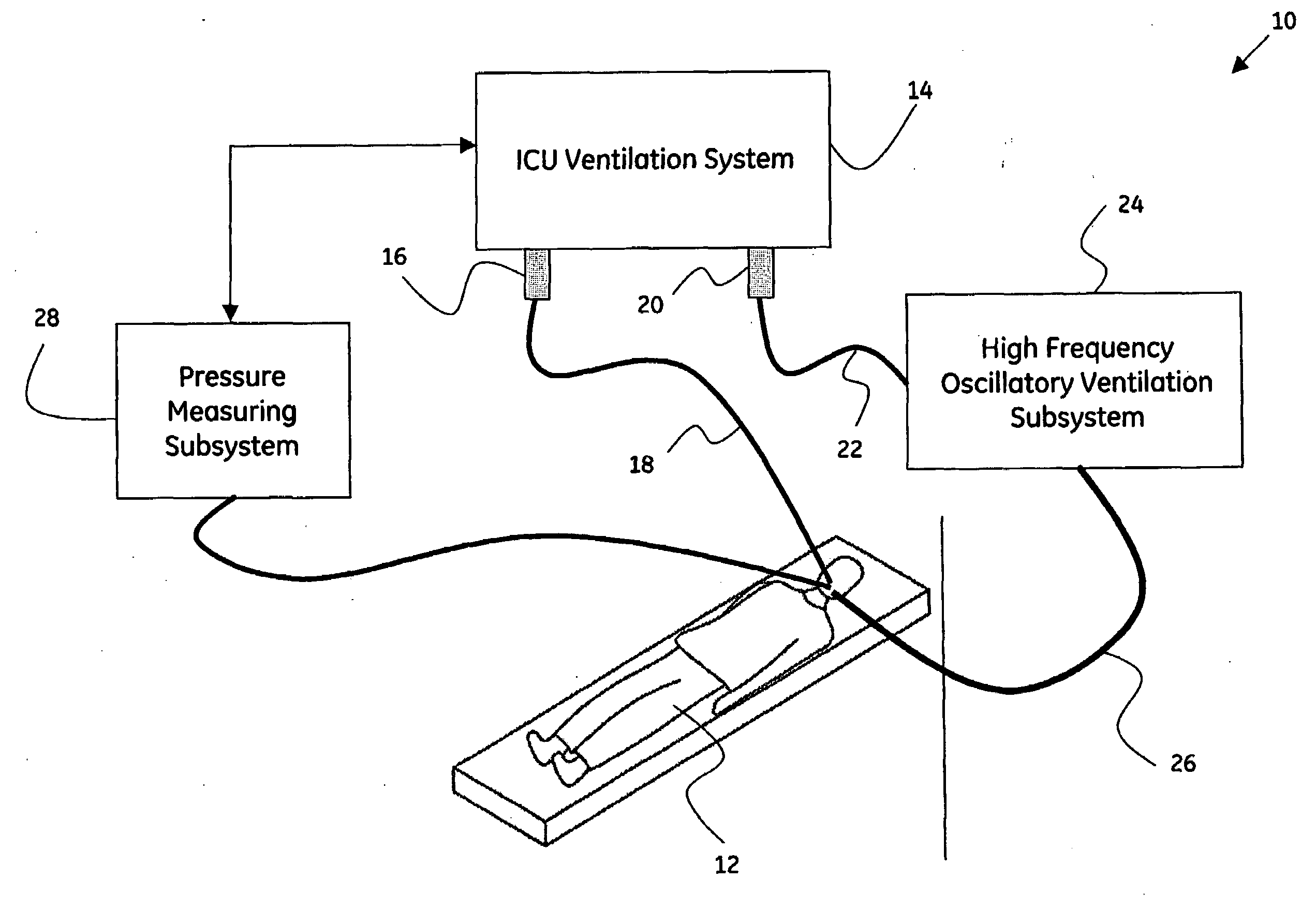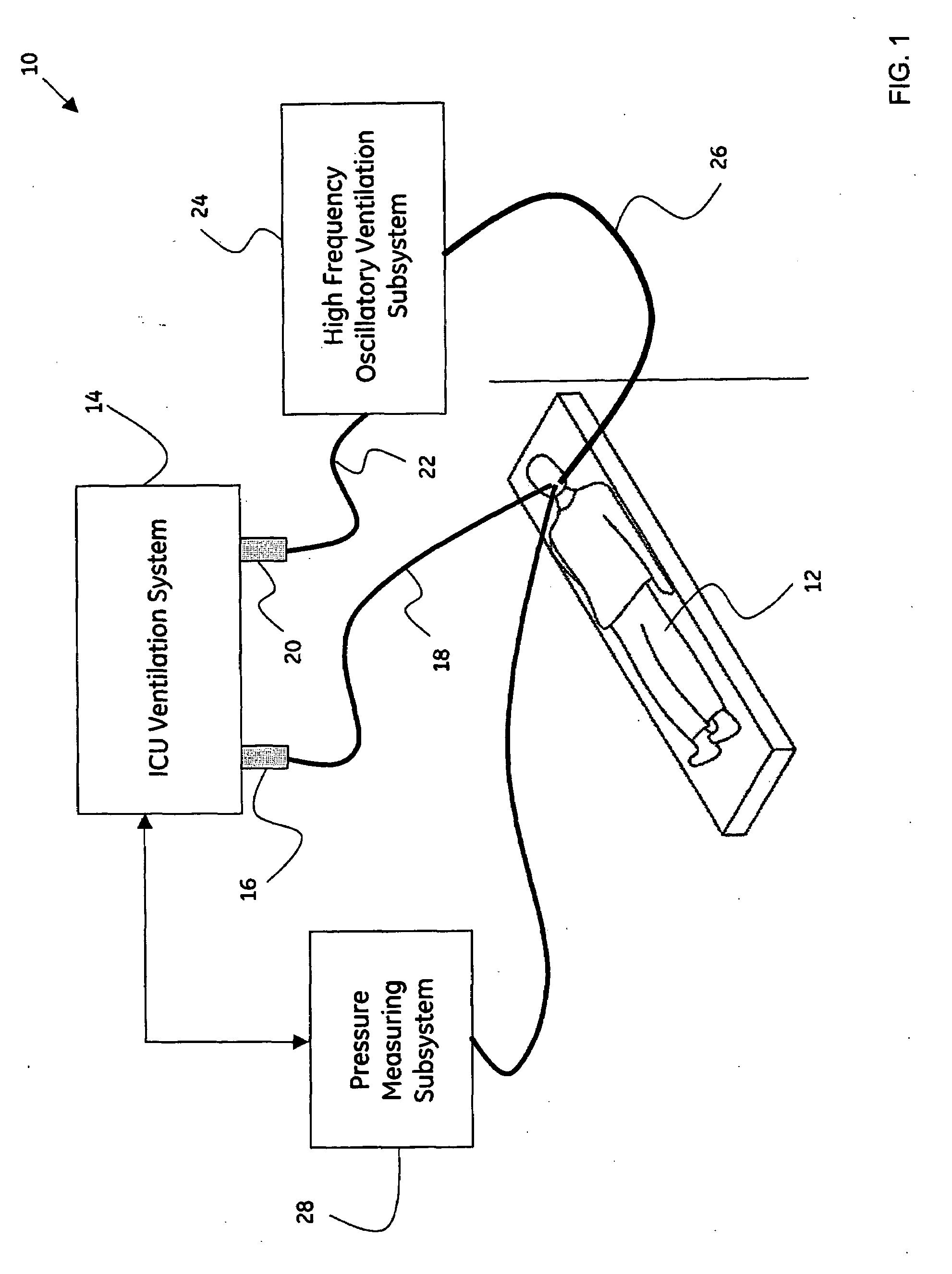System and method for integrated high frequency oscillatory ventilation
a high frequency oscillatory and ventilation system technology, applied in the field of clinical workflow, can solve the problems of reducing cardiac output, affecting ventilation efficiency, and affecting ventilation efficiency,
- Summary
- Abstract
- Description
- Claims
- Application Information
AI Technical Summary
Benefits of technology
Problems solved by technology
Method used
Image
Examples
Embodiment Construction
[0016]FIG. 1 is a block diagram of an exemplary integrated high frequency oscillatory ventilation (HFOV) system 10, in accordance with aspects of the present technique. More particularly, the system 10 may be configured to aid in providing integrated ventilation to a patient 12. In other words, the exemplary integrated HFOV system 10 may be configured to aid a traditional ICU ventilator in performing HFOV, thereby enhancing clinical workflow by providing seamless transition between normal ICU ventilation and HFOV, and preventing loss of circuit pressure during the transition and minimizing discomfort to the patient 12.
[0017]As previously noted, once a patient, such as the patient 12, has been identified as needing artificial ventilation, the patient 12 may be operationally coupled to a ventilation system 14. In a presently contemplated configuration, the ventilation system 14 may include a traditional ICU ventilation system. As will be appreciated, the ICU ventilation system 14 is a...
PUM
 Login to View More
Login to View More Abstract
Description
Claims
Application Information
 Login to View More
Login to View More - R&D
- Intellectual Property
- Life Sciences
- Materials
- Tech Scout
- Unparalleled Data Quality
- Higher Quality Content
- 60% Fewer Hallucinations
Browse by: Latest US Patents, China's latest patents, Technical Efficacy Thesaurus, Application Domain, Technology Topic, Popular Technical Reports.
© 2025 PatSnap. All rights reserved.Legal|Privacy policy|Modern Slavery Act Transparency Statement|Sitemap|About US| Contact US: help@patsnap.com



